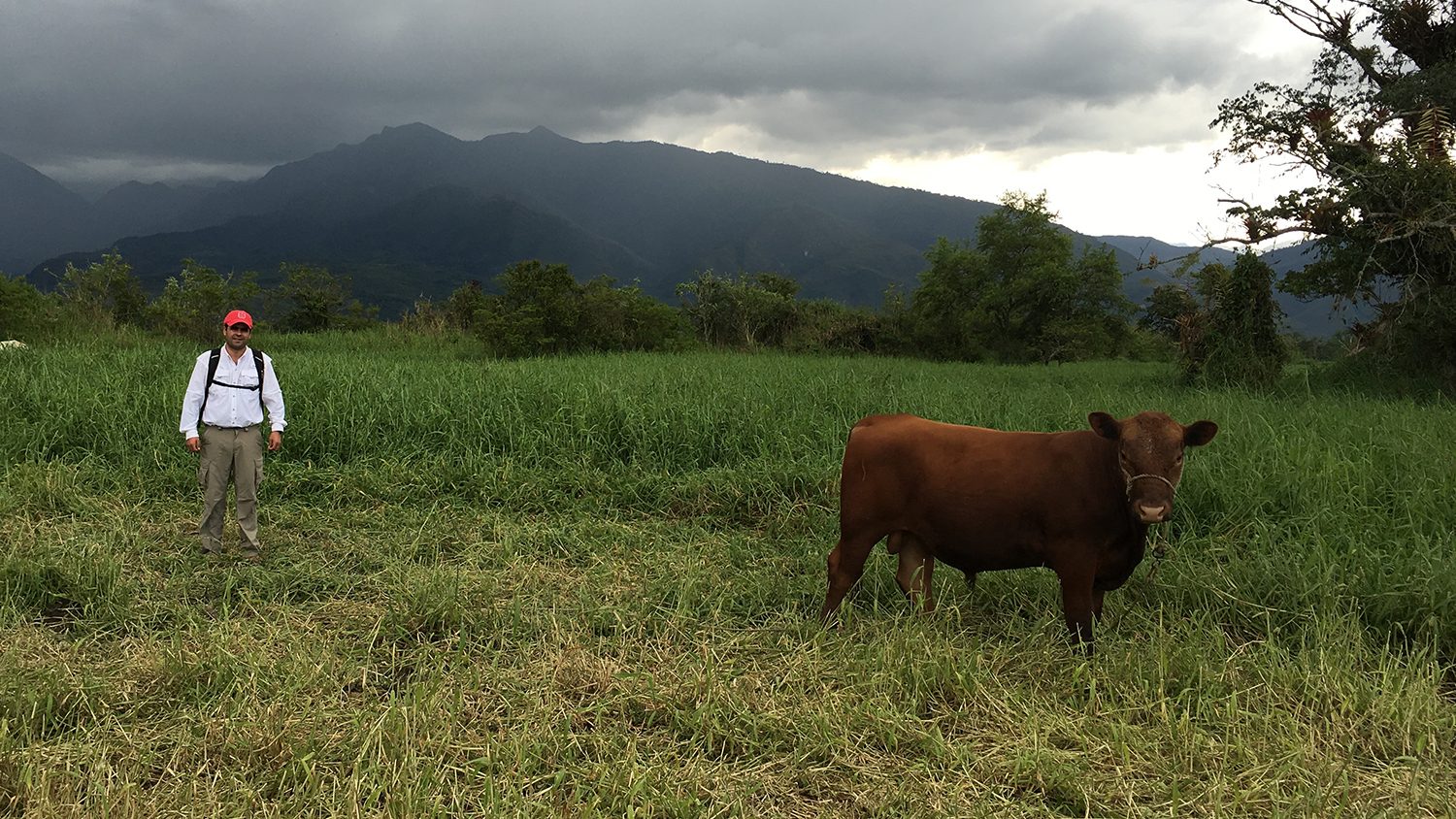
Miguel Castillo is an assistant professor of grassland agriculture at NC State.
by Matthew Davis, CALS research intern
How can a grower be more productive per acre while improving grassland ecosystems? How do we increase production to feed a growing population while sustaining available resources? Could silvopasture help?
Miguel Castillo is an assistant professor of grassland management at NC State. His passion lies at the intersection of animal nutrition and crop and soil sciences, and he’s been researching silvopasture’s benefits.
In a silvopasture system, trees are spaced far enough apart to allow sunlight penetration for understory grass growth, while providing shade and feed for grazing animals, Castillo explained.
Shade can be an important tool for management of animal heat stress during hot and humid weather, he added. In addition to providing shade, the integration of trees, forage and livestock can potentially contribute to a diversified source of income: The trees are harvested for timber, while the grass is used for hay or bioenergy and to feed grazing livestock.
Castillo’s research will enable land managers to make better decisions while integrating concepts of plant, soil and animal management in silvopasture systems.
When asked about his big vision for research Dr. Castillo said, “It would be to develop a formal network of research, education, and technology transfer efforts for grassland agriculture worldwide.
“Think about this: Grassland ecosystems make up at least a quarter of the available land worldwide, and grassland science is an integrative discipline, requiring knowledge of plants, animals, soils, and their interactions with the environment,” he said. Grassland agriculture not only provides forage to feed livestock, it also provides other services to the society — soil and water conservation, carbon sequestration, habitat for wildlife, a potential source for the production of fuel and fiber, and, as researchers are learning with silvopastures, also a potential diversified source of income for producers.
There are challenges, though, from funding and training research professionals to establishing research locations. Castillo says overcoming these challenges will necessitate crossing institutional and societal boundaries and will require global involvement.
Castillo said that researchers are starting to see a return from our efforts as they have been actively training students in a silvopasture locally and globally, with a project at N.C. Department of Agriculture and Consumer Services’ Cherry Research Farm in Goldsboro and also in Peru’s Amazonas region.
“We are currently training four graduate students that work and travel between these two research locations, seeking their graduate degrees at NC State and also at two other universities in Peru,” Castillo said. “NC State University has a strong history of international programs and specially with Peru. Thus, while we connect and support each other at the global level, our efforts can truly have an impact at the local level.”
Our faculty Think and Do the Extraordinary every day.
This post was originally published in College of Agriculture and Life Sciences News.